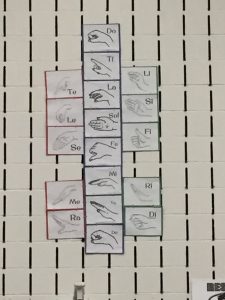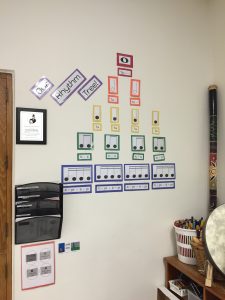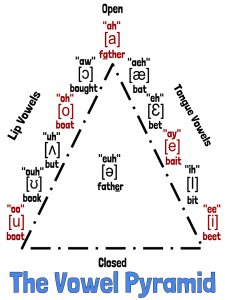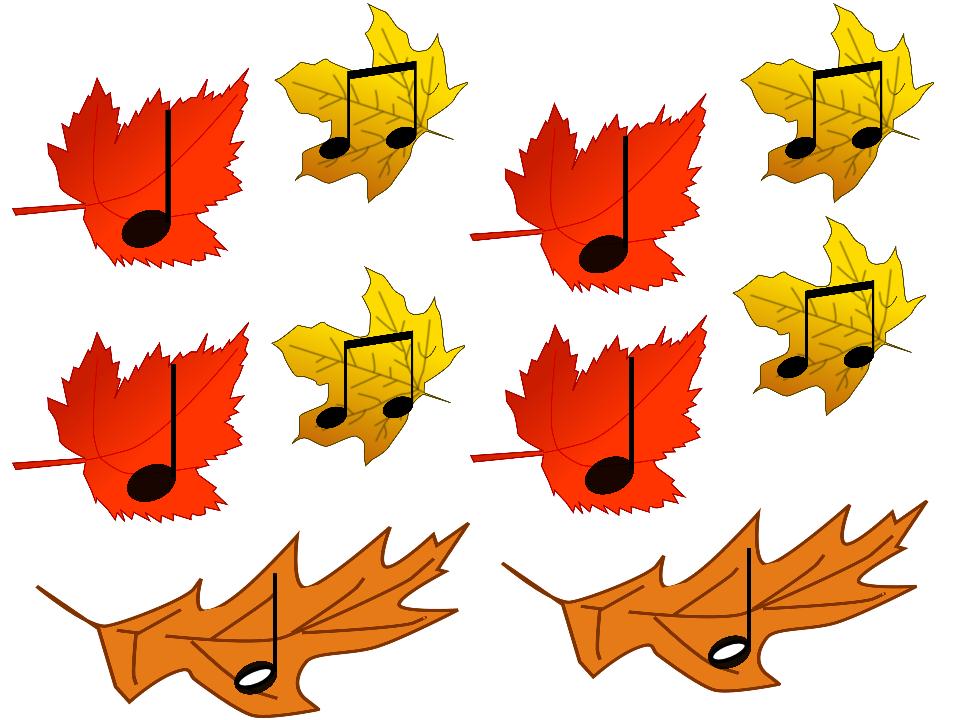In almost every choir classroom, there is a poster of hand signs representing the major scale as created by John Curwen. In my classroom, our hand signs were small, unlabelled, and did not have the chromatics.

Curwen Handsigns
This example is built on 8 1/2″ x 11″ paper that is backed by different colors: blue is the major scale, green is sharps, and red is flats.
This visual is then used as an aid for sight-reading, understanding solfege relationships, and eventually more challenging music theory concepts. In my advanced women’s group, we used the Curwen hand signs as a visual aid to understand how the scale can be used to build harmony and chords. Then, we were able to talk about progressions and how they relate to solfege.
This is available as a printable, just email me.




